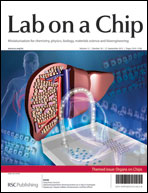Reorganization of cytoskeletal networks, condensation and decondensation of chromatin, and other whole cell structural changes often accompany changes in cell state and can reflect underlying disease processes. As such, the observable mechanical properties, or mechanophenotype, which is closely linked to intracellular architecture, can be a useful label-free biomarker of disease. In order to make use of this biomarker, a tool to measure cell mechanical properties should accurately characterize clinical specimens that consist of heterogeneous cell populations or contain small diseased subpopulations. Because of the heterogeneity and potential for rare populations in clinical samples, single-cell, high-throughput assays are ideally suited. Hydrodynamic stretching has recently emerged as a powerful method for carrying out mechanical phenotyping. Importantly, this method operates independently of molecular probes, reducing cost and sample preparation time, and yields information-rich signatures of cell populations through significant image analysis automation, promoting more widespread adoption. In this work, we present an alternative mode of hydrodynamic stretching where inertially-focused cells are squeezed in flow by perpendicular high-speed pinch flows that are extracted from the single inputted cell suspension. The pinched-flow stretching method reveals expected differences in cell deformability in two model systems. Furthermore, hydraulic circuit design is used to tune stretching forces and carry out multiple stretching modes (pinched-flow and extensional) in the same microfluidic channel with a single fluid input. The ability to create a self-sheathing flow from a single input solution should have general utility for other cytometry systems and the pinched-flow design enables an order of magnitude higher throughput (65 000 cells s−1) compared to our previously reported deformability cytometry method, which will be especially useful for identification of rare cell populations in clinical body fluids in the future.


 Please wait while we load your content...
Please wait while we load your content...